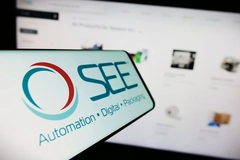Electronic shelf labels support consumers, debunking surge pricing claims, finds study

Electronic shelf labels (ESLs) may offer benefits to low-income consumers and help reduce food waste, according to economists. This challenges lawmakers’ claims that the technology is a source of price gouging in grocery stores. The study finds no evidence of price surges, even during periods of high inflation.
ESLs, increasingly replacing paper price stickers, have come under political scrutiny in recent years. US lawmakers, including Senators Elizabeth Warren, Bernie Sanders, and New York City mayoral candidate Zohran Mamdani, have raised concerns that the technology could be used for “surge pricing” in grocery stores, likening the technology to price hikes seen in ride-sharing apps like Uber or dynamic airline ticketing.
“Lawmakers have raised alarms that ESLs might be enabling surge pricing — a practice where prices increase dynamically in response to factors like time of day, weather, or demand spikes,” Ioannis Stamatopoulos, an economist at the University of Texas at Austin and co-author of the working paper, tells Packaging Insights.
The working paper argues against the narrative after analyzing over 180 million product-level observations and conducting an empirical investigation into whether ESLs facilitate real-time price hikes.
ESLs and low-income consumers
Proposed legislation to ban ESLs has surfaced in US states, including Arizona, Rhode Island, and Maine.
 Economists say targeting digital shelf labels as a source of price gouging is a distraction from the real drivers of food costs.Stamatopoulos argues: “The central concern is that ESLs could enable rapid, opaque price changes, giving retailers the ability to raise prices in real time without customers noticing or being able to compare prices easily. Legislators fear this could erode price fairness, particularly if prices surge during emergencies or peak hours.”
Economists say targeting digital shelf labels as a source of price gouging is a distraction from the real drivers of food costs.Stamatopoulos argues: “The central concern is that ESLs could enable rapid, opaque price changes, giving retailers the ability to raise prices in real time without customers noticing or being able to compare prices easily. Legislators fear this could erode price fairness, particularly if prices surge during emergencies or peak hours.”
“In lawmakers’ public letters to Kroger and Walmart, they [legislators] framed ESL-enabled surge pricing as ‘corporate profiteering,’ warning it could hurt families struggling with food costs. These letters cited fears of basic household goods becoming more expensive during high-demand periods, which would disproportionately affect low-income consumers.”
However, the new working paper suggests ESLs could benefit consumers, especially low-income shoppers. The technology enables rapid markdowns to items nearing expiration, such as fresh produce or dairy. Stores can help ensure these goods reach families in need instead of ending up in landfills.
Earlier work shows ESLs may be more effective than statewide organic food waste bans currently enacted in 11 US states.
Causes of price fluctuations
The economists looked into data from 114 stores across four US states that gradually adopted ESLs between October 2022 and mid-2024. They focused on identifying short-lived, unexplained price jumps — hallmarks of surge pricing.
“We define ‘surge’ as temporary price increases in prices lasting no more than seven days and followed by a price decrease. We were also careful to exclude cases like transitions to or from promotions, returns to base price after a discount, or reductions in discount depth that remain below regular price,” explains Stamatopoulos.
Prior to ESL adoption, such anomalies occurred in just one of every 20,000 products. According to the study, post-adoption, the frequency rose marginally, with a difference of 0.0006 percentage points. ESLs can empower retailers to create efficient stores.
ESLs can empower retailers to create efficient stores.
The authors find that base prices can reflect wholesale costs and competitor behavior. Short-term changes are usually driven by manufacturer-led promotions, such as “buy one, get one free” deals, often planned months in advance. These shifts are not reactive to local conditions, according to the economists.
Moreover, pricing remained mostly uniform across store chains. When prices changed, they did so across all locations, not selectively based on local demand.
“Unlike Uber or hotels, grocery stores don’t make money on a single item — they make money on your entire basket and your long-term loyalty. Using surge pricing could alienate shoppers and drive them away permanently, which is the last thing grocers want,” adds Stamatopoulos.
Europe leads in technology
Stamatopoulos notes that the US is behind Europe when it comes to ESLs. “The European experience shows ESLs are not used for surge pricing. They are used to reduce waste and improve access to healthy food.”
French tech firm VusionGroup is rolling out its ESLs in several European countries and enabling stores to operate around a sustainable, positive, and human-centered commerce business model.
The researchers aim to gather additional data and extend the study. “We have already gone beyond the six-month period requested by regulators, extending our analysis to 21 months post-ESL adoption. However, one could envision even longer-term monitoring.”
“Although we already focus on a retailer that has been under regulatory scrutiny, broader studies comparing ESL effects across multiple retailers, especially larger ones like Walmart or Kroger, could test generalizability,” says Stamatopoulos.











